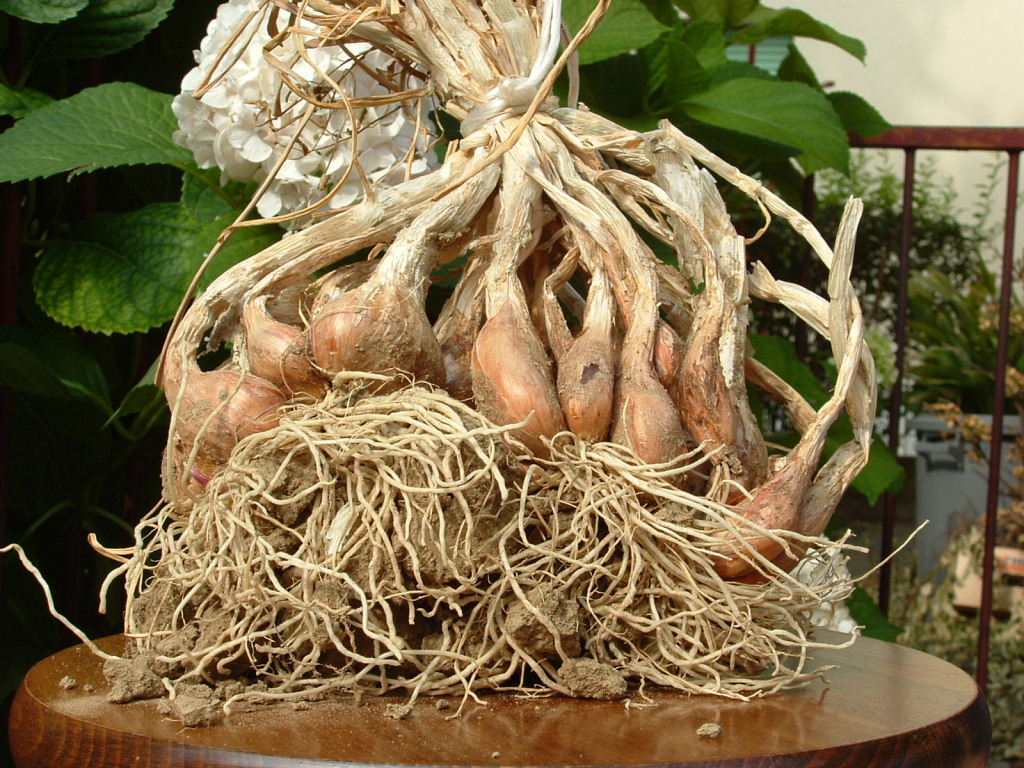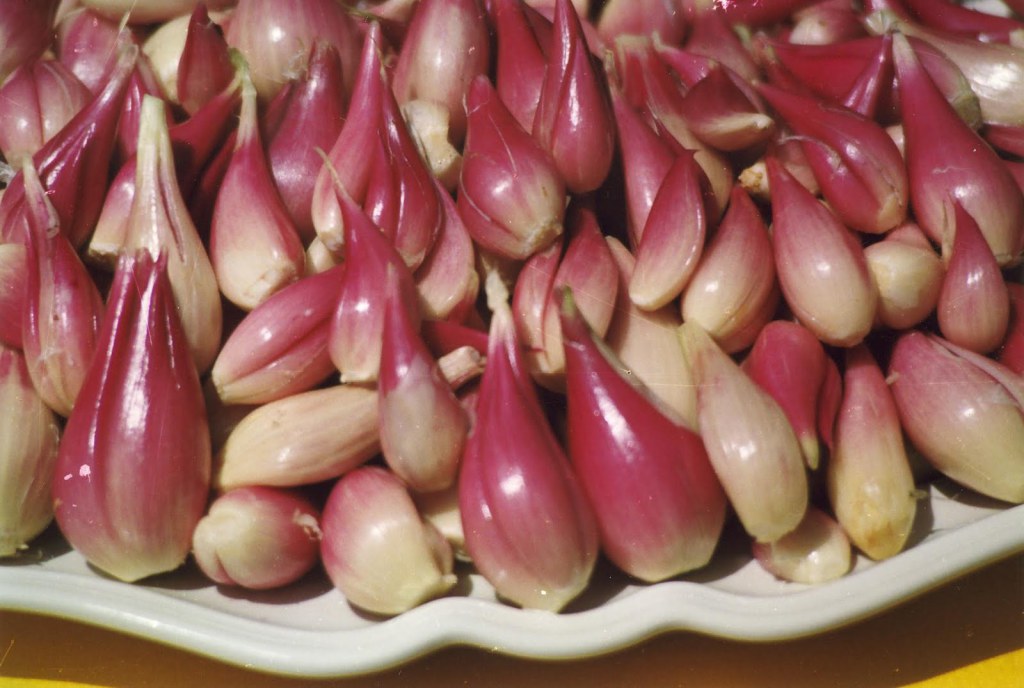 Scallion is a little bulb characterized by a white - purple colour, wrapped up by an external pellicle of a different colour, from copper to reddish. The most famous one is the scallion of Romagna, that can confer to different dishes a flavour that exalts their taste. Its leaves, too, are used. They are picked when they are still green and are finely cut. They are very suitable in order to season salads. The fresh bulbs, cleared of their external pellicle, are finely sliced in order to season different courses, to which they confer a slightly spicy flavour. In addition, with its finely cut bulbs, cubes of ham, and fresh tomato, it is possible to prepare a tasty meat sauce. Scallion is very good as side dish of courses, too, in its version in oil and pickled one. As it is a tasty and scented ‘relative’ of onion, scallion, too, is characterized by a strong detoxifying action, that directly acts on diuresis, fostering the elimination of toxins mainly through the kidneys.
Scallion is a little bulb characterized by a white - purple colour, wrapped up by an external pellicle of a different colour, from copper to reddish. The most famous one is the scallion of Romagna, that can confer to different dishes a flavour that exalts their taste. Its leaves, too, are used. They are picked when they are still green and are finely cut. They are very suitable in order to season salads. The fresh bulbs, cleared of their external pellicle, are finely sliced in order to season different courses, to which they confer a slightly spicy flavour. In addition, with its finely cut bulbs, cubes of ham, and fresh tomato, it is possible to prepare a tasty meat sauce. Scallion is very good as side dish of courses, too, in its version in oil and pickled one. As it is a tasty and scented ‘relative’ of onion, scallion, too, is characterized by a strong detoxifying action, that directly acts on diuresis, fostering the elimination of toxins mainly through the kidneys.
The production of scallion extends on many municipalities in the province of Ravenna (Brisighella, Casola, Valsenio, Castelbolognese, Faenza, Riolo Terme, Solarolo), Forlì (Modigliana, Tredozio), and Bologna (Borgo Tossignano, Casalfiumanese, Castel del Rio, Castel Guelfo, Dozza, Fontanelice, Imola, Mordano). On the packagings of scallion of Romagna, a label is applied, that presents the writing ‘Scalogno di Romagna’with the shape of an arc, realized with fresh scallion, extra-virgin olive oil, vinegar, and dry white wine. This sauce is used in order to accompany every sort of meat, especially baked dishes that include this ingredient. Another typical recipe in which scallion is the ‘leading actor’ are green fine noodles prepared with either spinaches or chards, accompanied by a white sauce without tomato, scallion stewed in water and flavoured with butter.
A bit of history
Scallion is cultivated in Romagna from immemorial time. In 1997 it obtained the IGP (Protected Geographical Indication). Its name comes from the name of the ancient harbour Ascalona, situated to the South of today’s Israel, a little above Gaza, from where scallion arrived in Europe, carried by crusaders. This place was famous because of these bulbs, that were considered curative, more than tasty, insomuch as the whole neighbouring land was assigned to this cultivation. Boccaccio reminds it in his short stories and Dioscoride, too, describes scallion as ‘Ascalonites bulb’, while Ovid, dealing with tonics for soldiers, describes it as a stimulant of strength and bravery. Scallion was appreciated and cultivated in Carlo Magno’s garden and its use spread during the twelfth century in France.
